- Home
- Deepak Chopra
Brotherhood: Dharma Destiny and the American Dream Page 4
Brotherhood: Dharma Destiny and the American Dream Read online
Page 4
When my parents first traveled from Bombay to London, it took them about three weeks by ocean liner. Now I can get on an airplane in Boston and be anywhere in India in less than a day. When I’m there, walking the streets of what is now Mumbai, I see many of the same international chain stores that I’d passed hours earlier in Boston. Growing up, we didn’t have television, but now I can turn on the set in India and watch some of the same shows I enjoy in the United States. Once, the only news we got was from All India Radio or the BBC. Now I can simply log onto Twitter, where I follow CNN, NBC, and the New York Times, instantly receiving the latest news from around the world. Because of advances in travel, communications, entertainment, and business, the world has gotten much smaller; the once distinct cultures of the world are blending, perhaps too much. But I’ve always found great comfort knowing that the core values I was taught by my family as part of our Indian culture still make an impact. They have allowed me to become a successful husband, father, grandfather, physician, and lecturer, in America.
3
..............
Charmed Circle
Deepak
Deepak and Sanjiv win first and second prize at a fancy-dress competition, as a snake charmer and as Lord Krishna, Jabalpur, 1958.
I MUST HAVE BEEN ABOUT THREE and a half when my earliest memories were formed. Being frightened and abandoned sticks in the mind. I was sitting alone in a city park, guarded by a magic circle drawn around me in the dirt. I watched the trees, not yet terrified, even though it was certain that, if I crept outside the circle, demons were waiting in the shadows.
The family had hired an ayah, or nanny, to look after me and my infant brother, Sanjiv. One of her duties was to take us to the park every afternoon so that my mother could have a few moments of peace. Was our ayah named Mary? Names are easily lost, but not feelings. In Pune, where my father was stationed (he hadn’t yet traveled to London for advanced training in cardiology), the ayahs were often young girls from Goa, a part of India settled by the Portuguese, where Christianity strongly took hold.
Whomever she was, our ayah kept looking over her shoulder every time we arrived at the park. At a certain point she would plunk me down on the ground and draw a circle around me in the dirt. She would warn me not to stray—outside the circle were demons—and then disappear. With or without Sanjiv’s baby carriage? That detail is lost. Half an hour later Mary would return, looking flushed and happy. Then she would take us home, reminding me to say nothing about her vanishing act. It would be our little secret. It was several years before I pieced together what was really going on.
First, the circle and the demons lurking outside it. Mary picked this up from a mythic story. By the time I was five or six, my mother began telling me tales from the two treasure troves of stories in Indian scriptures. One is the Mahabharata (Maha means great, and Bharata is the Sanskrit name for India), an epic saga of a war for succession in the ancient kingdom of Kuru. Its immortal centerpiece is the section known as the Song of the Lord, the Bhagavad Gita. If India is the most God-soaked culture on earth, it is also Gita-soaked. From childhood one hears verses taken from the conversation between Lord Krishna and the warrior Arjuna as they wait in Arjuna’s war chariot for the climactic battle to begin. The Gita is a cross between the Trojan War and the New Testament, if one had to give a thumbnail description. When Krishna tells Arjuna the meaning of life, he speaks as God made flesh.
But my mother was keen on the other primary collection of stories, the Ramayana, also an epic that involves a battle, this time between Lord Rama, a handsome prince who is an incarnation of Vishnu, and Ravana, king of the demons. Any boy would be transfixed by Lord Rama’s adventures. He was a great archer and had a devoted ally in a flying monkey, Hanuman, whose sole purpose in life was service to Lord Rama.
Blending the human and mythic worlds comes naturally to every child. In my family, though, Rama had a special meaning. Rama was banished into the forest for fourteen years by his father, the king; his father wasn’t angry with him but was forced to keep a promise made to a jealous wife. Leaving tears behind, the prince was followed into exile by his beloved wife, Sita, and, what particularly caught my mother’s attention, his younger brother, Lakshmana.
“You are Rama, and Sanjiv is Lakshmana.”
No sentence was repeated to us more often, although it took awhile before I absorbed its implications: It gave Sanjiv a lower rung on the pecking order than me. Rama was as devoted to his younger brother as Lakshmana was to him. But it was clear who issued the orders and who followed them. This set a selfish precedent in the Chopra family. My mother was adding a religious overtone to our relationship, as a Christian mother might tell her sons, “You are Jesus, and your brother is Simon Peter.”
I felt protective toward Sanjiv, but I didn’t hesitate to play the Rama card when it suited me. One such incident backfired badly. I was ten and the family was living in Jabalpur. My brother and I were in the backyard, practicing with an air rifle; this was a cherished present my father had brought back with him from London. The target was an empty can sitting on a five-foot post.
A whim entered my head. I stood directly behind the post and told Sanjiv to fire at the can.
He hesitated.
“It’s like William Tell,” I said. “Go ahead. You never miss.”
In school I had just learned the story of William Tell shooting an apple off his son’s head with a crossbow. At the time, standing behind a post while Sanjiv shot an air rifle in my direction seemed pretty much like the same thing. When I finally convinced him to do it, Sanjiv was so nervous he accidentally hit me with a BB right in the chin. It started to bleed, but I was more worried about getting into trouble with our parents than a minor wound.
“We have to lie,” I decided. “I know… let’s go home and say that I fell while climbing a fence. Some barbed wire nicked my chin, that’s all.”
“A lie?” Sanjiv looked distressed. He set his face stubbornly.
“You have to. I’m Rama and you’re Lakshmana.”
Still distressed but less stubborn, Sanjiv reluctantly agreed to go along with my plan, and our parents accepted the concocted story. But my wound refused to heal, and days later when my grandmother felt around my chin, she made a suspicious discovery.
“There’s something in there,” she announced.
A rush to the military hospital revealed the BB lodged in my chin. It was removed without leaving a scar (in family legend, however, this is how I acquired the dimple in my chin). I was sent home with antibiotics and a stern lecture from Daddy about the dangers of tetanus. I was relieved to be caught, actually. This incident was one step in a development that became part of my character growing up: a hesitancy to confront authority. A desire to please my father blended into a stronger desire not to displease him. But I was just at the beginning stages of this trait.
Back to our ayah’s disappearing act. She may have been a Christian, but Mary knew one of the most familiar tales about Lord Rama’s beloved consort, Sita (the two are a centuries-old model for ideal romance in Indian lore). One day Rama sets out to fetch Sita a magnificent golden deer he glimpsed in the forest. He swears Lakshmana to guard Sita, telling his brother on no account to leave her side.
But when hours pass and Rama has failed to return, Sita begs Lakshmana to search for his brother. Lakshmana is torn. At first he refuses to break his vow, but when Sita accuses him of not loving Rama enough to rescue him from danger, Lakshmana agrees to seek him out. He uses his magical powers to draw a charmed circle around Sita, telling her that she will be safe as long as she never crosses outside the boundary. Any mortal or demon who tries to enter the circle will be instantly consumed in flames. With this, Lakshmana disappears into the forest.
Sita waits anxiously, and the next person she sees is a wandering monk who begs her for alms. He is a pitiful sight, and Sita is too softhearted. She steps outside the circle to put an offering in his begging bowl, and at that instant the monk is transformed, assuming his real identity as the ferocious demon Ravana. He scoops Sita up and abducts her to his island kingdom in the south, beginning yet another adventure in the saga.
My circle in the dirt was more powerful than the one Lakshmana drew; I never dared crawl outside it. But Mary’s mysterious disappearances were for a mundane reason, as it turned out: a secret boyfriend she could only meet in the park when she took her little charges out.
I’m not sorry that she used a myth to train me. The anecdote has an exotic ring, and it fits into a pattern. Flash forward to 1987, at a decisive time when I was coming out of a personal crisis. My frustration with conventional medicine was turning into personal rebellion. A thriving private practice and my position as an attending physician at some prestigious hospitals were at stake. Boston medicine was willing to abandon me if I wanted to abandon it.
I had made my decision to bolt. At the time, people were glued to a sensational television series, The Power of Myth, where Bill Moyers was interviewing the eminent authority on world mythology, Joseph Campbell. I was transfixed. It was like breathing air from a forgotten world. In India taxi drivers create mini shrines inside their cabs to invoke protection, complete with plastic effigies of Ganesha, a beloved god with an elephant’s head and round belly. Their dashboards are plastered with photos of gurus, and long-haul trucks are emblazoned with a slogan invoking Lakshmi, goddess of prosperity: Jai Mata Di (Hail Mother Goddess in Punjabi). A new billionaire might place stone statues of various gods and goddesses in the foyer of his multistory mansion before having the interiors decorated by a Parisian designer. The living mythology of modern India provides local color but is also a symbol of deeply felt meaning.
Campbell was a born storyteller who could clothe legends in the fragrant romance they evoked long ago. I remembered that I was once wrapped in mythic ideas—and ideals—that had dropped away like an old skin. Romance wasn’t really the point. Campbell held mythology out as a living presence, the underpinning of everyday life. Unwittingly a businessman waiting on a street corner for the light to change was a hero in disguise. His life had the potential to be a quest. Beneath the mundane details of his days, a vision was crying to be born.
I saw myself through Campbell’s eyes—I think millions of other people did at the time. I was standing on the corner waiting for the light. Only no one had ever promised me that it would turn green. We were very close with the Rao family. Dr. Rajindra Rao had the first private X-ray machine in Jabalpur. His practice primarily screened people’s lungs for tuberculosis, which was rampant at the time. He also made a team with my father, confirming with an X-ray what my father’s acute diagnostic skills had detected in a patient. His wife, Mallika, was also a doctor and had become the leading gynecologist in Jabalpur. Their combined clinic made them quite prominent in the city. The Raos’ daughter, Shobha, was nicknamed Ammu, the homey term used in South India for a little girl. Ammu was two years younger than Sanjiv. We accepted her as our sister. On the festival of Rakhi, a sister ties a braided bracelet around her brother’s wrist, while her brother pledges to protect her. Growing up together, we performed the ritual with Ammu—and still do, with the occasional lapse (Ammu has a real brother, too, named Prasan, two years older). Today she lives outside Boston, following in her father’s footsteps as a radiologist.
As the oldest, I was the leader of the pack, and I went so far as to assign each of us a military rank, with me as captain. (Looking back, I’m touched, with a twinge of guilt, at how trusting my troops were as they followed me, listening with rapt attention to my commands, which were more like iron whims.) We played every game together, and Ammu, a bit of a tomboy, even agreed to be part of the all-boy cricket team Sanjiv and I started in the neighborhood.
Ammu’s father owned a prized possession that awed everyone he passed: a maroon Chevy Impala. The car was originally owned by a man who had made a fortune manufacturing bidis, the cheap cigarettes wrapped in the leaf of the ebony tree and tied at one end with a string. The poorest workingmen could afford bidis, and they were a constant smell in the streets. (Bidis remain a horrible health hazard, but the divine must have a sense of humor. Nisargadatta Maharaj, one of the most revered south Indian gurus, ran a bidi shop in Bombay, above which he gave sublime spiritual guidance.) Bidis had made the Impala’s previous owner a multimillionaire, rich enough to import an American highway cruiser, before he tired of it.
One day, with a wedding to attend far away from Jabalpur, our two families, the Chopras and the Raos, piled into the Impala in a state of great excitement. There were eight of us, but room was made to squeeze in the Raos’ jack-of-all-trades servant, who cooked for us at night and was presumed to be able to fix the car if it broke down en route. The trip from Jabalpur to Delhi was five hundred miles. We broke up the tedium by stopping off to tour the famous diamond mine in Panna. The mine is an open scar on the landscape, dug in stepwise fashion like an open-pit coal mine and filled with bright green waste water in the middle.
Dr. Rao had turned the driving over to my father. As we pulled out of town, a noisy black car spewing exhaust seemed to be following us. A turn onto the main road, and it stayed on our tail. Dacoits. That’s what my father presumed they were: local bandits. The dacoits must have suspected that anyone leaving the diamond mine in a big American car must be carrying diamonds. This was still turbulent post-independence India. Some regions were riddled with racial and religious violence. The clash between Hindus and Muslims that began in 1947 with the overnight partition of India and Pakistan had led to a vast murderous purge that claimed even Mahatma Gandhi to an assassin’s bullet.
My father tried to lose the black sedan, but after a few minutes the tense situation had become a full-blown car chase. Our pursuers tried to run us into a ditch. My father gunned the engine to put some distance between us and them, but after a moment the black sedan caught up. It pulled alongside close enough that we could see three fierce men inside. But I don’t remember being frightened. In fact, Sanjiv and I were thrilled.
A word about bandits and their peculiar status in India. Any attempt to make daily life orderly seems to fail there. If you send your best dress shirt to the dry cleaner’s and there is a spot on one sleeve, they may helpfully cut both sleeves off (as happened to an outraged American friend a few years ago). Or they might use kerosene instead of dry-cleaning fluid, a smell that never quite goes away. You learn to put tape over the postage when you mail a letter, to discourage postal workers from stealing the stamps and discarding your letter. In a third-class hotel a family may tire of waiting for their dinner dishes to be taken away—presuming that a large family has been sleeping in one room in the same bed—so why not store the dirty crockery in a dresser drawer? The next guest may be a bit surprised to discover them there when he opens the drawer (this happened to another visiting friend), but not all that much. Behind the apparent chaos, every social distinction is known down to the finest detail.
The hidden order that rules India is a way to preserve everyday life. There are dividing lines everywhere. People are silently aware of caste, even now, decades after it became illegal to discriminate on the basis of caste. A person’s name instantly reveals where he was born and usually the dharma, or family occupation, he follows. By the time you have heard a stranger’s name, caught his accent, and assessed his dialect and vocabulary, perhaps a minute has passed, but in that minute was revealed a condensed autobiography—and with it a tightly bound package of prejudices. Modernism threw people together who never wanted to breathe the same air. They had to sit together in tight railway coaches, and no country packs its populace onto railways like India. The strict old rules, such as the one requiring a Brahmin from the priest caste to go home and bathe if the shadow of an untouchable crossed his path, were no longer practical. Was it really viable, under British rule, for a person born into an upper caste to throw out all the food in the house and clean it from top to bottom after a foreigner came to call?
India’s messy dance between chaos and order is crystallized in the dacoit. Between the early Thirties and mid-Fifties, a notorious bandit named Man Singh far outdid any legendary American gangster like John Dillinger. In his whole career Dillinger was credited with robbing two dozen banks and four police stations, in the course of which he actually killed only one person, a policeman. Man Singh committed more than eleven hundred armed robberies and killed 185 people, not counting numerous kidnappings for ransom and shootouts with the law—he killed thirty-two policemen.
Singh was born in the Chambal Valley in the central state of Madhya Pradesh, in terrain crisscrossed with deep winding ravines and scrub forest—perfect hiding places. Singh occupied a secure social standing where he lived; he was never turned in despite the sizable reward on his head. He was a provider. His gang consisted of his extended family, more than a dozen brothers and nephews, and when he spoke in public, in brazen defiance of his outlaw status, Singh was humble and respectful. After he was gunned down in 1955 by Gurkha soldiers as he sat under a banyan tree with his son, a temple was erected in his honor. Dacoits worship at this shrine today, it is said, praying to be kept safe on their next robbery.
A complicated tale, as interwoven with contradictions as the whole society, or human nature. Outlaws in every culture are romanticized, but where else outside India do they have their own temple? Where else could the most famous female dacoit, Phoolan Devi, surrender to police with ten thousand onlookers cheering as she placed her rifle down before a picture of Gandhi? (After serving her prison sentence, the “Bandit Queen of India” was elected to Parliament, only to be gunned down in front of her house in New Delhi before she turned forty. My good friend, the director Shekhar Kapur, rose to international fame with his 1994 film, Bandit Queen. It contained a graphic scene of sexual assault on the young Phoolan Devi that one outraged critic called “the Indian rape trick,” but this scene underscored why she became a kind of feminist martyr.)

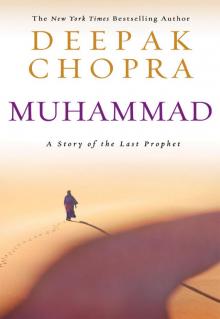 Muhammad: A Story of the Last Prophet
Muhammad: A Story of the Last Prophet Buddha
Buddha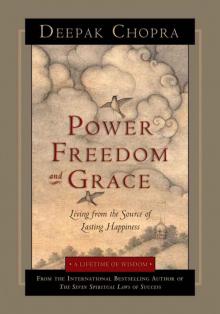 Power, Freedom, and Grace
Power, Freedom, and Grace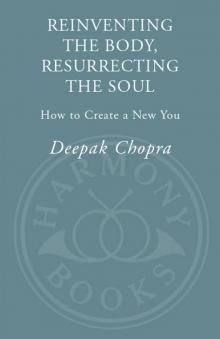 Reinventing the Body, Resurrecting the Soul: How to Create a New You
Reinventing the Body, Resurrecting the Soul: How to Create a New You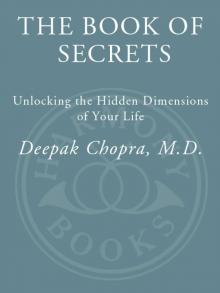 The Book of Secrets: Unlocking the Hidden Dimensions of Your Life
The Book of Secrets: Unlocking the Hidden Dimensions of Your Life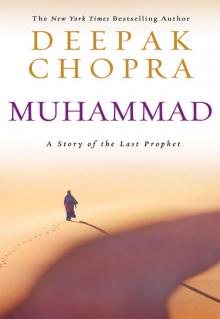 Muhammad
Muhammad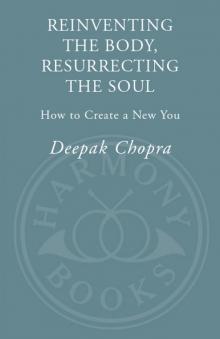 Reinventing the Body, Resurrecting the Soul
Reinventing the Body, Resurrecting the Soul